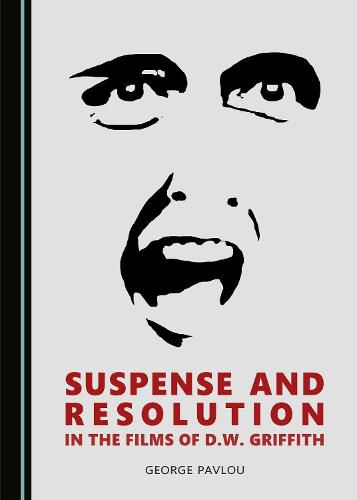Readings Newsletter
Become a Readings Member to make your shopping experience even easier.
Sign in or sign up for free!
You’re not far away from qualifying for FREE standard shipping within Australia
You’ve qualified for FREE standard shipping within Australia
The cart is loading…






This book offers a significant and original contribution to studies on D.W. Griffith and film, through a systematic analysis of the director’s chase scenes, which create suspense and resolution in his films. The predominance of the emphasis of building suspense differs in the various stages of his chase scenes. The primary source of material discussed here is Griffith’s films after 1913 when he left the Biograph Company. Griffith’s post-Biograph films are more complete and representative of his techniques than his earlier films, which were subject to financial constraints while he was still innovating and developing his cinematic techniques. Most of his films used in this analysis were provided by the Museum of Modern Art in New York City. The purpose of this study is to determine a definition of a Griffithian chase scene in terms of his editing techniques. Categories are established, defining specific tools. This is done by determining and documenting consistencies, comparisons, and specific patterns occurring in his chase scenes that generally do not occur in his general editing. Griffith’s basic mechanics in editing are filmic time and space, parallel action, referential crosscutting, and decomposition.A major finding in this book is that Griffith’s chase scenes are the most important part of his films in terms of suspense and resolution. His chase scenes are complex, unique and sometimes even unpredictable. As such, this is an important new work on D.W. Griffith, and will be of interest to scholars and others interested in both the director and film, and will also be an asset to libraries and bookstores.
$9.00 standard shipping within Australia
FREE standard shipping within Australia for orders over $100.00
Express & International shipping calculated at checkout
This book offers a significant and original contribution to studies on D.W. Griffith and film, through a systematic analysis of the director’s chase scenes, which create suspense and resolution in his films. The predominance of the emphasis of building suspense differs in the various stages of his chase scenes. The primary source of material discussed here is Griffith’s films after 1913 when he left the Biograph Company. Griffith’s post-Biograph films are more complete and representative of his techniques than his earlier films, which were subject to financial constraints while he was still innovating and developing his cinematic techniques. Most of his films used in this analysis were provided by the Museum of Modern Art in New York City. The purpose of this study is to determine a definition of a Griffithian chase scene in terms of his editing techniques. Categories are established, defining specific tools. This is done by determining and documenting consistencies, comparisons, and specific patterns occurring in his chase scenes that generally do not occur in his general editing. Griffith’s basic mechanics in editing are filmic time and space, parallel action, referential crosscutting, and decomposition.A major finding in this book is that Griffith’s chase scenes are the most important part of his films in terms of suspense and resolution. His chase scenes are complex, unique and sometimes even unpredictable. As such, this is an important new work on D.W. Griffith, and will be of interest to scholars and others interested in both the director and film, and will also be an asset to libraries and bookstores.